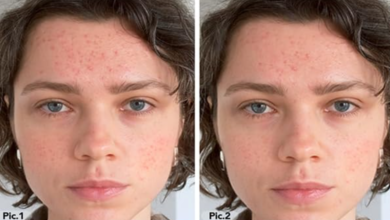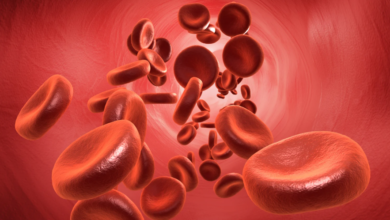It often begins quietly. A loved one starts declining invitations. The phone rings less. Meals become simpler, or skipped altogether. They say they’re fine — just tired — but you notice something’s changing. It’s not just age catching up; it’s something deeper, harder to name.
Loneliness, disconnection, and loss of structure are silent forces that erode emotional well-being in older adults. Yet in the rush to focus on physical health — blood pressure, mobility, medications — the mind is often left behind. The result? A growing mental health crisis among seniors that most families don’t see coming until it’s already in motion.
The Hidden Epidemic No One Talks About
The numbers tell a story few want to face. According to the CDC, nearly one in four adults over 65 experiences symptoms of depression — and those living alone are at the highest risk. But here’s what’s truly concerning: less than 20% of those individuals receive consistent mental health treatment.
Why? Because the signs are subtle. Depression in older adults doesn’t always look like sadness. It can look like withdrawal, irritability, poor appetite, or an unwillingness to leave the house. Sometimes it’s masked as forgetfulness or fatigue — and families mistake it for “just aging.”
What’s often overlooked is that mental health and daily environment are deeply intertwined. The same four walls that once felt safe can eventually become isolating. The home that once symbolized independence can slowly turn into a quiet trap of routine, silence, and neglect.
The Science of Connection
Neuroscientists have spent decades studying how human interaction affects the brain. For seniors, social connection isn’t just emotionally uplifting — it’s biologically protective.
Studies from the National Institute on Aging show that seniors who engage in regular social and cognitive activities have a 55% lower risk of developing dementia. Emotional engagement — laughter, conversation, friendship — literally preserves the neural networks that maintain memory and reasoning. In contrast, prolonged isolation increases cortisol levels, which can damage those same areas of the brain over time.
Assisted living environments, when designed thoughtfully, reverse that trend. Structured routines, peer engagement, and staff support don’t just prevent loneliness; they regulate brain chemistry. Group meals, shared hobbies, and simple conversations around the breakfast table stimulate cognitive and emotional health in ways that solitary living cannot replicate.
The mind, it turns out, needs company to stay alive.
When Familiar Becomes Harmful
Most people associate “home” with safety, but for many older adults, the home becomes a place of quiet deterioration. What used to be comforting routines slowly turn into isolation patterns: eating less, sleeping irregularly, skipping doctor’s visits. Without daily engagement, days lose shape — and the brain, deprived of stimulation, begins to slow down.
Research from Harvard’s T.H. Chan School of Public Health reveals that seniors who live alone and lack regular interaction face a 40% higher risk of cognitive decline within five years. The human brain, especially in older age, thrives on pattern and feedback. When those are absent, decline accelerates.
That’s why mental well-being can’t be separated from environment. Assisted living doesn’t just offer care; it restores structure — a rhythm of days that brings purpose back to life.
Where Mental Health Finds Its Rhythm Again
The modern assisted living model is often misunderstood. Gone are the institutional corridors and identical rooms that once defined elder care. Today’s communities operate more like small ecosystems of wellness — built around safety, purpose, and belonging.
Here’s what that looks like in practice:
- Structured social calendars that encourage group activities, art therapy, and movement
- Trained caregivers who recognize early signs of depression or anxiety
- Nutrition programs tailored to cognitive and emotional balance
- Wellness initiatives like mindfulness sessions or light exercise routines that boost serotonin and endorphin levels
- Personalized spaces that allow residents to keep familiar belongings, anchoring them emotionally
When daily life feels predictable yet purposeful, anxiety and isolation tend to fade. The consistency of human contact — greeting staff in the morning, joining a conversation at lunch, or sharing an evening activity — can gently rebuild a sense of identity that loneliness erodes.
In such settings, families often notice something remarkable: their loved ones smile again. They laugh more. They look forward to mornings. Mental health, once fragile, begins to stabilize through simple human connection.
It’s in that environment where facilities like serenity living home care play a meaningful role — not by offering grand solutions, but by weaving empathy, routine, and engagement into the everyday lives of residents.
The Emotional Relief Families Rarely Expect
Families often underestimate how much emotional strain they carry while trying to care for a loved one alone. The fear of forgetting a medication dose. The guilt of missing a visit. The exhaustion of managing every detail while watching someone they love slowly lose joy.
Professional environments provide something that’s easy to overlook: peace of mind. When caregivers are trained to support both emotional and physical health, families can step back into their natural role — not as nurses or schedulers, but as sons, daughters, spouses, and friends again.
And for the senior, that shift matters. It replaces tension with affection, responsibility with relationship.
In well-run communities like serenity living home care in florida, this balance becomes visible. Residents receive attentive, structured care while maintaining the dignity of choice — what to wear, when to rest, how to spend their day. Freedom exists within safety, and it’s that combination that brings calm to both residents and their families.
A Quiet Revolution in Aging
What’s emerging now is a shift in how society understands aging itself. It’s no longer about “where” people live, but how they live there. Longevity without mental wellness isn’t success — it’s survival. The goal must be more than extending years; it must be enriching them.
Assisted living, when done well, is not the end of independence. It’s the evolution of it. It preserves choice while providing structure, safety, and meaningful social connection — the essential ingredients of emotional resilience in later life.
The conversation around senior care often starts with fear: fear of cost, of letting go, of change. But the deeper truth is that professional support doesn’t erase autonomy — it gives it back. The right environment doesn’t take away a person’s identity; it helps them remember it.
That’s what healthy aging really looks like: not just living longer, but living with a clear mind, steady mood, and a sense of belonging that never fades.




